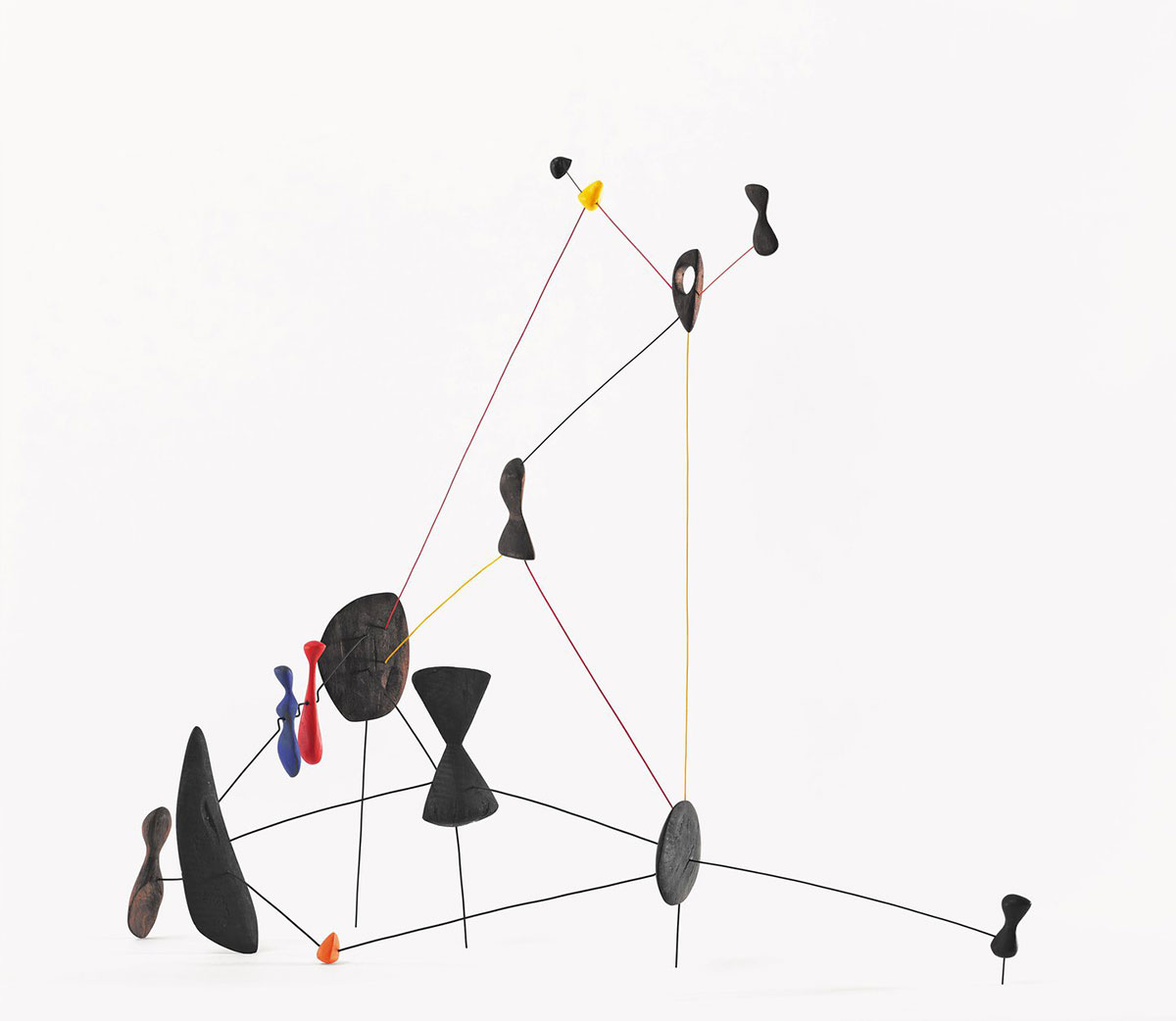ART CITIES: Los Angeles-Calder/Tuttle Tentative
 Brought to life through Richard Tuttle’s vision, the exhibition “Calder / Tuttle: Tentative” focus on Alexander Calder’s artistic output in 1939, bringing together small- and medium scale sculptures including an untitled mobile that is being exhibited for the first time, as well as a selection of works on paper created by the artist that year.
Brought to life through Richard Tuttle’s vision, the exhibition “Calder / Tuttle: Tentative” focus on Alexander Calder’s artistic output in 1939, bringing together small- and medium scale sculptures including an untitled mobile that is being exhibited for the first time, as well as a selection of works on paper created by the artist that year.
By Dimitris Lempesis
Photo: Pace Gallery Archive

Richard Tuttle’s approach for “Calder/Tuttle Tentative” focuses on Calder’s intentions for his 1939 works and the greater context in which he produced them. Tuttle questions the ways that aesthetic and philosophical exchanges between Europe and the United States in this period reflect in Calder’s practice. On a formal level, Tuttle explores enactments of verticality and horizontality, as well as plays of light and shadow, in Calder’s work. Tuttle’s vision for this exhibition, which centers on the ways that space discovered in the mobiles flows into two-dimensional abstract expressionist painting, disrupts long and widely held ideas about Calder’s impact on viewers and other artists during his lifetime and since his death. Best known for his mobiles, which transformed the modern conception of sculpture, Alexander Calder is widely regarded as one of the most important artists of the 20th century. He was also a favorite collaborator of the greatest architects of his time, and works related to three architectural commissions from 1939 is included in the exhibition: Calder’s six intimately scaled maquettes made to complement architect Percival Goodman’s design for the Smithsonian Gallery of Art Architectural Competition, each of which feature lively forms poised on wires extending from trapezoidal bases; the nearly seven-foot-tall stabile “Sphere Pierced by Cylinders” (1939), created as part of Oscar Nitzschke’s architectural proposal for the Bronx Zoo; and finally, a hanging mobile related to Calder’s commission, “Lobster Trap and Fish Tail” (1939), for the main stairwell of Philip L. Goodwin and Edward Durrell Stone’s new building for The Museum of Modern Art on West 53rd Street in New York. The latter mobile makes its public debut at Pace in LA. Additional highlights of the Calder the includes “Gothic Construction from Scraps” (1939), a standing mobile that the artist constructed from rough-hewn metal forms discarded while making other works; “Black Petals” (1939), a freestanding black sculpture with elongated, abstract forms situated in a diagonal formation that seems to propel itself upwards; “The Tuning Fork” (ca. 1939), not exhibited for the past 40 years, in which an amalgam of differently weighted forms dynamically interact in myriad ways; and “Little Mobile for Table’s Edge” (ca. 1939), an unusual study of precarity and balance. In the way of works on paper, which represent a lesser known but significant aspect of Calder’s practice, the show will feature five vibrant compositions that examine relationships between otherworldly forms. Imbued with a dreamlike sensibility, these works, along with one monochromatic pencil drawing that serves as a study for an untitled mobile in the show, can be understood in conversation with Calder’s sculptures featuring spirals, discs, flourishes, and other motifs that appear elsewhere in his oeuvre.
Photo: Alexander Calder, Constellation, 1943, wood, wire and paint, 33″ × 36″ × 14″ (83.8 cm × 91.4 cm × 35.6 cm), © 2019 Calder Foundation / Artists Rights Society (ARS), New York
Info: Pace Gallery, 1201 South La Brea Avenue, Los Angeles, CA, USA, Duration: 21/1-25/2/2023, Days & Hours: Tue-Sat 10:00-18:00, www.pacegallery.com/

Right: Alexander Calder, Snag, 1944, Bronze, 39″ × 33″ × 21-1/4″ (99.1 cm × 83.8 cm × 54 cm), © 2019 Calder Foundation / Artists Rights Society (ARS), New York

Right: Alexander Calder, Object with Red Ball, 1931, Wood, sheet metal, rod, wire, and paint, 61-1/4″ × 38-1/2″ × 12-1/4″ (155.6 cm × 97.8 cm × 31.1 cm), © 2019 Calder Foundation / Artists Rights Society (ARS), New York
